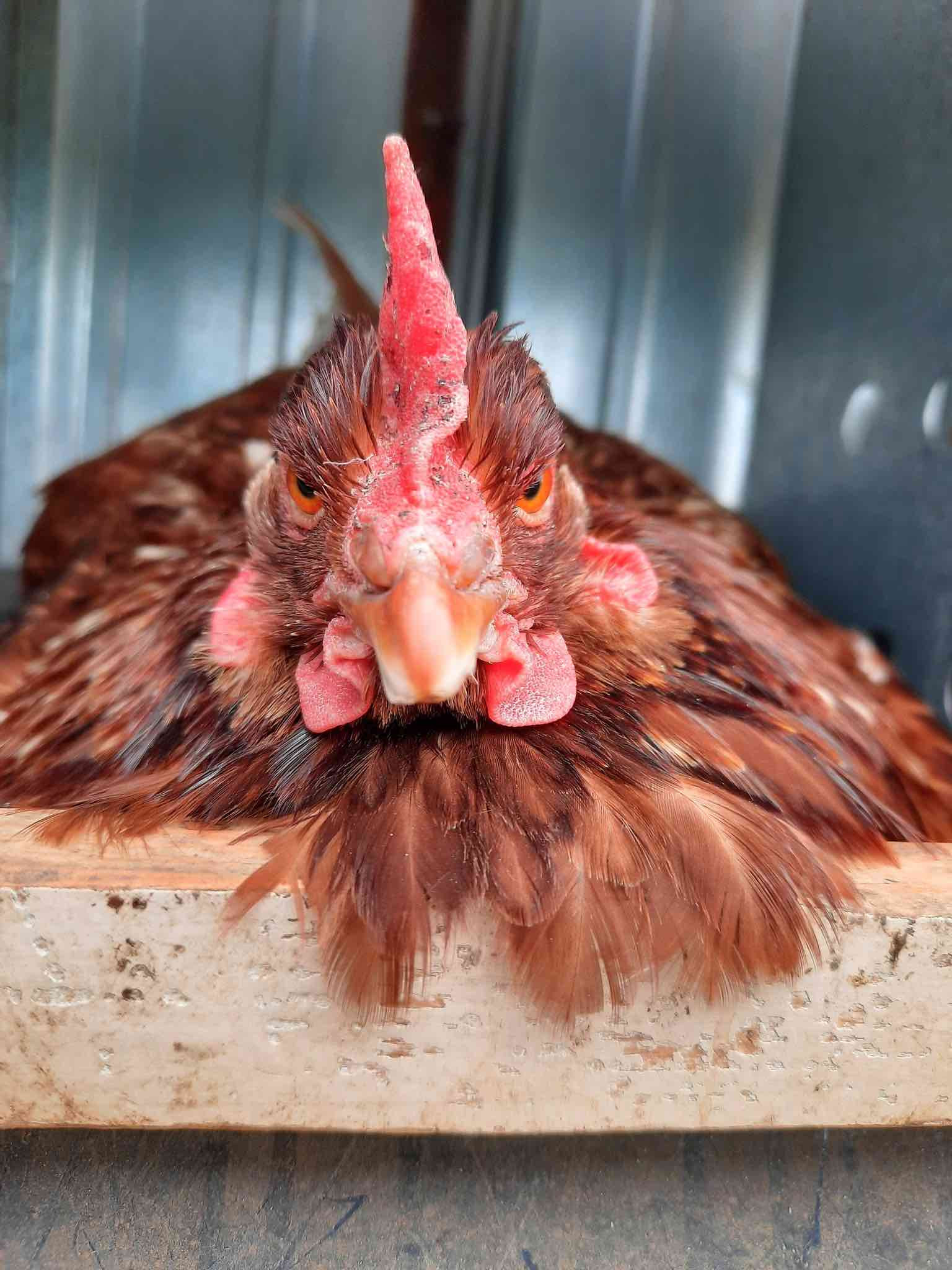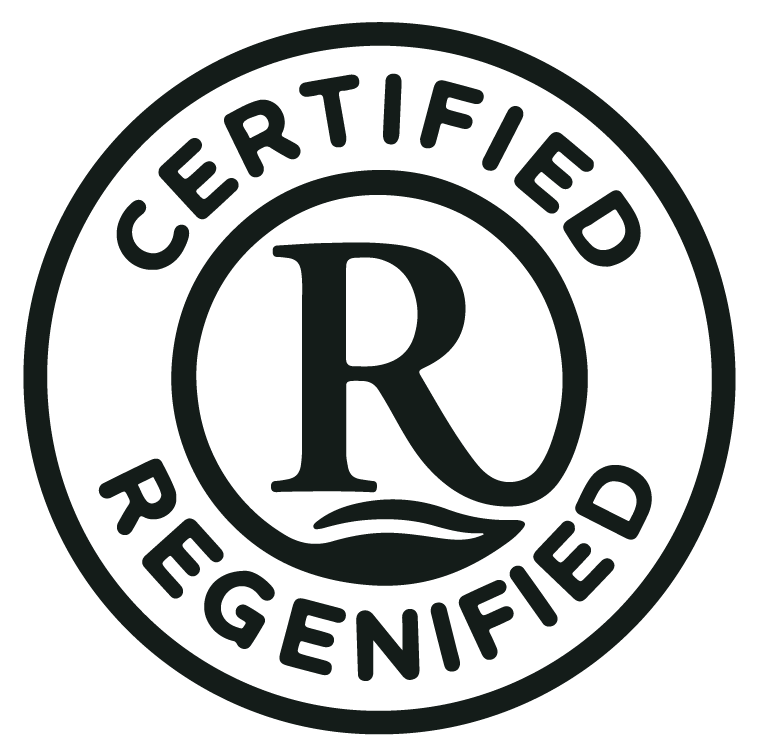Eminent Domain for Private Gain- Private Property Owners vs. Big Industry
posted on
February 24, 2023
I don’t normally post anything political and this isn’t necessarily a post about politics. However, over the past 14 months I have learned a great deal about how politics works.
I will give you some background as to what we have been dealing with over the past year and a half on the ranch. The Green New Deal, Inflation Reduction Act and Carbon Capture. As part of the government's plan to curb climate change, in 2008, 45Q tax credits were offered for carbon capture at a price of $50/tonne and that recently went up to $85/tonne last year as part of the Inflation Reduction Act (US Code, 2022).
Now, I am not a denier that the climate is changing however, if we look at how agriculture is currently being conducted en masse, I do believe that we as an agricultural community can do much better. We’ve shown on our ranch as well as many other regenerative ranches that by utilizing the 6 principles of soil health we can store carbon back into our soils. What better method to store carbon than by working with nature?
As a point of reference, we’re providing some charts from a study that was published back in 2019 on White Oak Pastures down in Bluffton, GA. While we realize that this data is not from our ranch directly and isn’t specifically comparing apples to apples, it speaks to the carbon impact that one can have using the tools of mother nature alone. No pipelines, no taking of people’s property, no societal risk. Just going back to the basic fact that plants can photosynthesize, taking CO2 out of the atmosphere and storing it in a more stable, organic form.
As stated on the EPA’s website:
“various management practices on agricultural soils can lead to increased availability of nitrogen in the soil and result in emissions of nitrous oxide (N2O). Specific activities that contribute to N2O emissions from agricultural lands include the application of synthetic and organic fertilizers, the growth of nitrogen-fixing crops, the drainage of organic soils, and irrigation practices. Management of agricultural soils accounts for just over half of the greenhouse gas emissions from the Agriculture economic sector. (EPA, 2022)”
The complete life cycle analysis study showed that through the production of White Oak Pastures’ (WOP) regeneratively raised beef, net total emissions were -3.5 kg CO2-equivalent emissions for each kg of fresh meat. Additionally, total emissions expelled to produce equivalent output of carcass weight per year for listed livestock in the conventional ag production systems are 11.5 mil kg CO2-eq versus WOP's production of 1.9 mil kg CO2-equivalents. Just looking at this study briefly leads us to believe that it’s not the commodity but the method in which it's produced. If you care to look more closely at this study, you can do so by following the link here.
Although regenerative agriculture and the focus on soil health are becoming more widely adopted principles, they have met great resistance to change in the face of government subsidies. Basically, the government subsidizes farmers to farm a certain way. That is the way of monocultures, focusing on yield as the primary target which usually requires intense use of fossil fuels. Fertilizers, chemicals, diesel and tillage are all tools that are heavily utilized in agriculture that is subsidized by the government (taxpayer). What effect do you think that has on the carbon footprint? Not to mention, the detriment that this kind of agriculture has on the health of the soil. So isn’t it ironic how the government is so concerned about climate change, funding projects to combat it, yet they also fund practices that greatly contribute to the ever-expanding carbon footprint? Can you say $$$$....It’s like shooting yourself in the foot and putting a band-aid on the other.
The Story...
Back to the story…in the fall of 2021 we first learned about a proposed CO2 pipeline that Summit Carbon Solutions (SCS) wanted to run through some of our rented land east of Bismarck. Up to that point, I had never heard of a CO2 pipeline and didn’t even realize that it was a thing. After all, isn’t CO2 necessary for our rooted friends? Why do we need to sequester it in such a bizarre manner? Looking into it more, I found out that this pipeline would carry CO2 from 32 ethanol plants located in Nebraska, Iowa, Minnesota, South Dakota, and North Dakota. The CO2 would be pumped 5,000+ feet below ground about 70 miles NW of our ranch where it would be sequestered forever. Is it just me or does this sound crazy?
Anyways, a landowner that we rent from confronted us about it and we advised against signing any leases for a project such as this. The pipeline was originally routed to run a half mile east of the new Silver Ranch subdivision and brand new elementary school, right through land that Bismarck is expanding toward. Seems like a good spot for a 2’ diameter high-pressure line right?
In spring of 2022, we started getting letters from SCS that they had moved the proposed line onto our own property and other rented ground further east of town. This proposed line was going to cut through the corner of our home section of land and run through another 160 acres further north. We received multiple calls, visits and easement proposals even after we declined and told SCS that we were not interested. The compensation they were offering was laughable for a 99 year easement and was around ⅛ of the price that other pipelines were offering landowners. Not that the dollar amount mattered to us as we simply did not want our soils torn up to support the monoculture-based corn/ethanol complex.
Then in June, we received new easement proposals for some of our other property. This time, the line was set to run 500’ from our front door! This is when we started taking action and getting neighbors involved. Unless contacted by SCS for easements, most people had no clue about this project coming through the neighborhood and honestly, many still have no idea. We once again declined the easements and told SCS that we are not interested in signing any paperwork for this project.
Apparently our word didn’t mean anything because at roughly 4:20 pm on June 9th, Jaz and I were leaving to make deliveries when we came down our driveway and were blocked by a survey crew parked on our private road. They were out on our property with survey equipment with absolutely no permission to be there. When I confronted the crew they tried playing dumb with me- said they were from out of state- stating that they were legally allowed to be there because they were on a section line. Well, my driveway is on a quarterline so it is pretty bad if in fact the survey crew thought they were on a section line. I called their boss and told him that they needed to leave immediately as they had no permission to be there. This crew was caught by multiple other neighbors trespassing also with no right to access. Come to find out, other landowners in other counties and states were having issues and as I publish this post, many landowners in the state are being sued by SCS because they are not allowing them access to survey their properties.
-screenshot here from their website about their standards for conducting business with landowners-
As fall came around, we hadn’t heard from SCS nor had been served papers that we were getting sued like some other neighbors had so I really began to wonder. Then, one day in September I was out checking cows and noticed a survey crew on my neighbor’s to the east. So knowing their sneaky tactics I contacted my neighbors and found out that unfortunately they had allowed permission and as of this day I am pretty sure they have signed easements. One thing that we have found out is that a lot of these easements that SCS are offering are for 99 year surface easements on the ENTIRE parcel of land that the pipeline is going through. This means that some people are or have likely unintentionally signed over the surface rights to the whole parcel of land for 99 years to SCS, not just the 60’ wide swath of land impacted by the pipeline.
In October, SCS filed their permit with the Public Service Commission deeming themselves “common carrier” status which means through state law that their pipeline is to be utilized for the betterment of humanity, giving them the same rights as electrical lines, oil lines and natural gas lines. Therefore, it gives them the right to eminent domain which means that they can take your land, giving you “fair market value” in return without your consent.
To make this clear, SCS is a private company, funded upfront by venture capitalists whose gross annual operating revenue of roughly $1.02 billion ($85/tonne x 12 million metric tonnes= $1.02 billion) will be coming directly from taxpayer dollars. This private, for profit company has the ability to take your private land. Did I mention that Ag Secretary Tom Vilsack’s son is an executive of this company? Create a problem, come up with a solution, and let the tax money flow in to make millions of dollars with your buddies. Seems like a good gig.
As far as the action we have taken, the opposition to the CO2 line has gotten some of the townships and county commissions to pass resolutions stating that they are against the use of eminent domain for this project in their county/townships. While these resolutions don’t hold much weight, they do show the position of the vast majority of the public opinion and may be used in the hearings on SCS’s permit that was filed with the Public Service Commission. The big day in our county (Burleigh) for the PSC hearing is scheduled for March 14th.
The Legislative Session:
As our 68th legislative assembly is in session, there were some good bills put forth to address changing the law of deeming CO2 pipelines as being eligible for common carrier status, therefore negating the ability for eminent domain. Senate Bills 2209, 2212 & 2314 all addressed this in some way, which would have relieved private property owners of the burden of eminent domain being used. The written and oral testimonies given for these bills were basically private landowners vs. industry. I know of only a handful of people who gave testimony that are private property owners that were in favor of the project. These landowners were located above the sequestration zone and would be paid annually whereas the landowners affected by the pipeline would be paid only once. The overwhelming majority (at least 95%) were against the use of eminent domain and in favor of these bills and gave some great testimony.
However, these personal testimonies fell on deaf ears as the Senate Energy and Natural Resources Committee voted these bills down and recommended a Do Not Pass to the Senate floor on them. It was interesting watching the committee hearings on these bills as the committee actually recommended a DO PASS on one of them, then had to go to general session only to return and flip their vote a couple hours later! They stated that they were “unclear” about the bill or “received new information” that changed their minds. In other words…lobbyists grabbed them in the hallways and deals must have been made.
Pretty crazy to watch and it is unfortunate to see individuals that are supposed to represent their constituents moving to the tethers of big industry. I emailed multiple times with no responses. I do want to thank my district Senator Jeff Magrum for standing up for the people he represents. These bills were all defeated by a majority on the Senate floor and unfortunately will not be seen or voted on by the House.
Where We Stand Today...
The pipeline thankfully is not going to go through our own land, but does border it, only 150’ away from our property line for over a mile and cuts through the half mile of land that separates my place from our northern pastures that we graze in the summer. Unfortunately, we will have to work in the vicinity of this potentially dangerous line and it is only ½ mile away from my house. When our neighbors signed the leases, they greatly diminished the value of our property (knowingly or not). State law declares a 500’ setback for pipelines meaning that a new pipeline cannot be constructed within 500’ of an existing residence. While there is no law stating that you cannot construct a residence within 500’ of the pipeline, who would want to? Therefore, 350’ of our own property may be “un-developable” in the future due our neighbors' decisions. Who eats that cost? While I am not interested in selling our land for development, at some point in time at the rate Bismarck is expanding, our ranch will be in town. Future generations may have to sell and their ability to do so will be affected.
One final point that I would like to make is that the safety of CO2 pipelines are questionable because they are relatively novel. SCS indicates that this particular line would be 4’ deep and as us cold-climate people know, most water lines here need to be 8’ deep to keep intact and from succumbing to our freeze-thaw cycles. There was a CO2 pipeline that ruptured in Satartia, Mississippi in February of 2020 that sent 45 people to the hospital and led to the evacuation of many others. Within minutes of the rupture, people were passing out and vehicles were dying due to the lack of oxygen.
Lynn Helms is the director of North Dakota Department of Mineral Resources and testified stating that if this SCS line was to rupture in perfect weather conditions that non-dangerous levels of CO2 would occur one mile from the leak. That means that within a mile of a leak, dangerous (and perhaps life-threatening) levels of CO2 would occur. The proposed route of this line runs within 1.5 miles of both Naughton and Menoken schools as well as many housing developments including our ranch. Not to mention the livestock that could be put in danger in non-developed areas. Also, our prevailing wind direction is from the northwest which doesn’t sit well for Bismarck being positioned south of this pipeline.
Here is a link for a controlled rupture of an 8” CO2 pipeline. Keep in mind that this line is 2’ so imagine the dispersion difference in a line three times the size.
Here is the proposed and current route of this pipeline:

While we obviously don't want anyone's life threatened by the development of SCS's pipeline, the fact of the matter is that we're highly unlikely to win the battle against the lobbyists and federal funding at play here. Our hope is that the pipeline would get rerouted to a less populated area where the societal risk is much lower and that landowners would be more fairly compensated for the easements that are being negotiated.
How can you get involved?
On March 6th, the Burleigh County Commission will be addressing the CO2 pipeline. 5:00 p.m. in the Tom Baker Room City/County Building, 221 N. 5th St. Bismarck, ND.
On March 8th, the Burleigh County Planning and Zoning Board will be holding a hearing about the pipeline. 5:15 p.m. in the Tom Baker Room City/County Building, 221 N. 5th St. Bismarck, ND.
The PSC hearing will take place at 8:30 a.m. March 14 at the North Dakota Heritage Center auditorium in Bismarck for Oliver, Morton and Burleigh counties.
Anyone who is a current resident of the afore-mentioned counties is able to attend. This is our chance to show up and make our voices heard. The link above also shows dates and times that the Public Service Commission will be meeting regarding other counties affected as well.
If you want to help with legal fees, you can join the North Dakota Easement Team. There are currently 42 of us individuals sharing lawyer fees to fight against the charges that SCS has brought forth. Here is a link to the website: https://www.northdakotaeasement.org/
Also, one of the bills that I wrote testimony for is Senate Bill 2251 which requires surveyors to get written permission from the landowner before surveying. This bill was proposed due to the actions of SCS’s surveyors. Thankfully it did pass the Senate with a 46-1 vote. The House is now reviewing the bill and if you’d like to send an e-mail to the House Energy and Natural Resources Committee, here is a template of an e-mail you could use, urging their support of the bill.
Sources:
Environmental Protection Agency. (n.d.). Sources of Greenhouse Gas Emissions. EPA. Retrieved February 23, 2023, from https://www.epa.gov/ghgemissions/sources-greenhouse-gas-emissions#agriculture
Thorbecke, M., & Dettling, J. (2019). (rep.). Carbon Footprint Evaluation of Regenerative Grazing at White Oak Pastures (pp. 1–34). Quantis.
United States code. GovInfo. (2022, June 14). Retrieved February 24, 2023, from https://www.govinfo.gov/help/uscode






